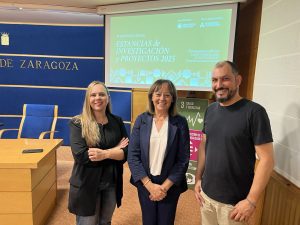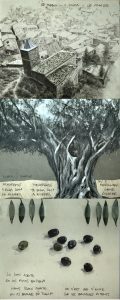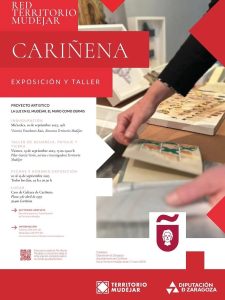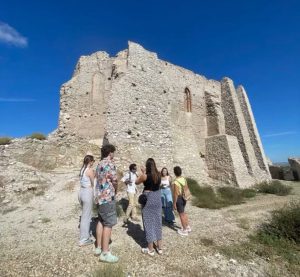
Territorio Mudéjar has completed the first phase of the preliminary studies for the drafting of the management plan for the Mudejar architecture of Aragon as a UNESCO World Heritage Site. In this phase of the project, which is funded by the Ministry of Culture*, working groups have been held with the different stakeholders, field visits and working meetings with a full list of collaborators.
Territorio Mudéjar is responsible for the development and drafting of the study and diagnostic work necessary for the drafting of the Management Plan for the Mudéjar Architecture of Aragon property. The aim is to have an instrument that will enable all areas of management to be addressed in a comprehensive, sustainable and effective manner: protection, preservation, research, dissemination and territorial and social impact.
The work of Territorio Mudéjar has included the creation of working groups by areas of work that have enabled the analysis, diagnosis and drafting of preliminary documents to compose the management plan.
In this sense, the organisation has held a round of meetings with the different actors involved: managers, town councils and competent administrations.
As an example, an initial meeting-visit was held at the beginning of February in the church of San Pablo (Zaragoza), followed by another analysis and diagnosis visit. In these meetings, the parish and Sergio García, head of management, collaborated.
Two meetings were held in La Seo: an initial working group and a diagnostic one, in which Daniel Granada, canon of La Seo and of the Cabildo and parish priest of La Seo, took part.
In Calatayud, the meetings were held with José Manuel Gimeno as representative of the City Council and with Salvador Esteras, technical expert.
In Cervera de la Cañada there have been meetings with the town and parish councils. In addition.
In the case of Tobed, work has been carried out with the Town Council’s management team through the Mahoma Calahorrí Museum.
There has also been a meeting with the Directorate General for Patrimony and a round table with the heads of service of this directorate.
In April, a European visit-meeting was organised in Calatayud, Tobed and Cervera de la Cañada with a team from the University of Zaragoza, the Politecnico di Torino and the Politecnico di Milano.
In addition, there have been meetings with ZaragozaCity Council, the Diocese of Tarazona and the different interlocutors of the Administration.
There have also been technical visits. For example, one of them, held in April, was attended by participants at European level, specifically from the Politecnico di Torino.
In addition, some of the issues diagnosed and worked on during these months were presented at the technical conference of the Alliance of Cultural Landscapes and Related Places held on 25 and 26 April in Tobed, Cervera de la Cañada and Calatayud. This issue was presented as part of the knowledge of the host property.
LIST OF COLLABORATORS:
During this first phase of the project , the collaboration of:
Area of collaboration: State of the art in terms of research.
Esteban Sarasa Sánchez. PhD in Philosophy and Letters (History) from the University of Zaragoza, professor emeritus and director of the J. Zurita Chair of History at the Fernando el Católico Institution in Zaragoza.
Mar Vals Fusté. PhD in History from the Rovira i Virgili University and researcher on the Territorio Mudéjar project “Reading the Mudejar: Arabic inscriptions in medieval Aragonese churches (13th-15th centuries). Based on this stay and her speciality in Art History from the inscriptions, she has collaborated in approaching the monument as a document.
Ascensión Hernández. Professor in the Department of Art History at the University of Zaragoza. She has collaborated on the state of the question of the authenticity criticism of buildings declared World Heritage, taking as a reference the work carried out on the parish church of La Seo a few years ago.
Luis Alberto Longares. PhD in Geography and lecturer in the Department of Geography and Territorial Planning at the University of Zaragoza. The area of collaboration has been the palaeoenvironmental evolution of the landscape and its knowledge for a correct management of the environment.
José Castillo Ruiz. Professor of Art History at the University of Granada. He contributes from the point of view of agrarian heritage, that is, how people have intervened in the landscape in which the monuments declared World Heritage by UNESCO are contextualised.
Area of collaboration: building management
Daniel Granada, secretary of the Cabildo de La Seo and parish priest of the parish of La Seo, and Sergio Blanco, heritage delegate of the Diocese of Zaragoza and manager at San Pablo.
Jesús Vicente Bueno, abbot of the Collegiate Church of Calatayud and heritage delegate of the Diocese of Tarazona.
Pedro Luis Hernando, professor of art history at the University of Zaragoza in Teruel and heritage delegate of the Diocese of Teruel-Albarracín.
Victoria Trasobares Ruiz, Director of Territorio Mudéjar and art historian. Manager of Tobed Mudéjar.
Working groups were held with them to analyse and diagnose aspects to be taken into account for the diagnosis of management, the state of conservation, the state of research, signposting and dissemination.
Area of collaboration: Dissemination
Irene Ruiz Bazán, professor at the Politecnico di Torino; Gianluca Vita, professor at the Fine Arts Academy of Urbino in the Department of Applied Heritage Technologies, have collaborated on digitisation strategies applied to diagnosis, dissemination and communication.
Patricia Ciria. Multimedia journalist specialising in strategic communication and marketing. She has collaborated in the diagnosis of communication, audience analysis, positioning and strategic lines of communication.
Estudio Mique. Graphic design studio specialising in branding, logos, labels, packaging, advertising and communication. He has collaborated in the analysis of branding and signage analysis of the Mudejar architecture of Aragon.
* This project of Territorio Mudéjar has been selected in the 2023 call for grants for projects for the conservation and dissemination of World Heritage properties of the Ministry of Culture and Sport. Territorio Mudéjar is thus part of a group of more than 20 Spanish organisations working to promote and improve the application of the World Heritage Convention and its guidelines. These grants are financed by the Ministry of Culture and aim to promote the development of projects for the management, protection and conservation of these assets, as well as to promote their accessibility, visibility and dissemination at national and international level.




